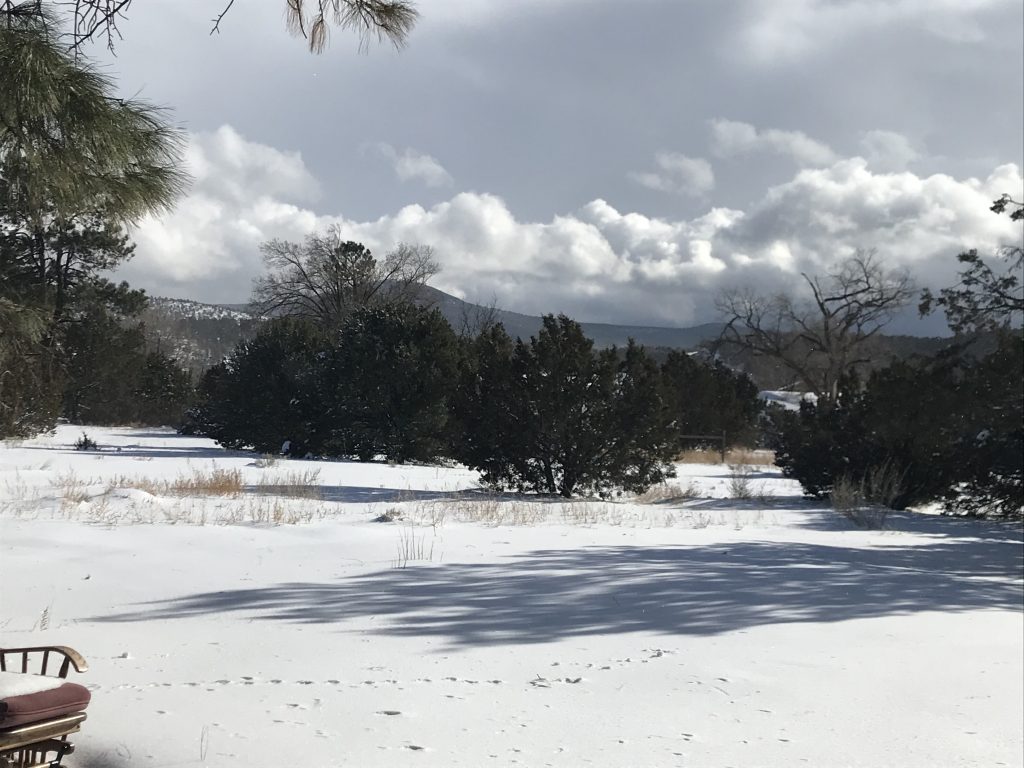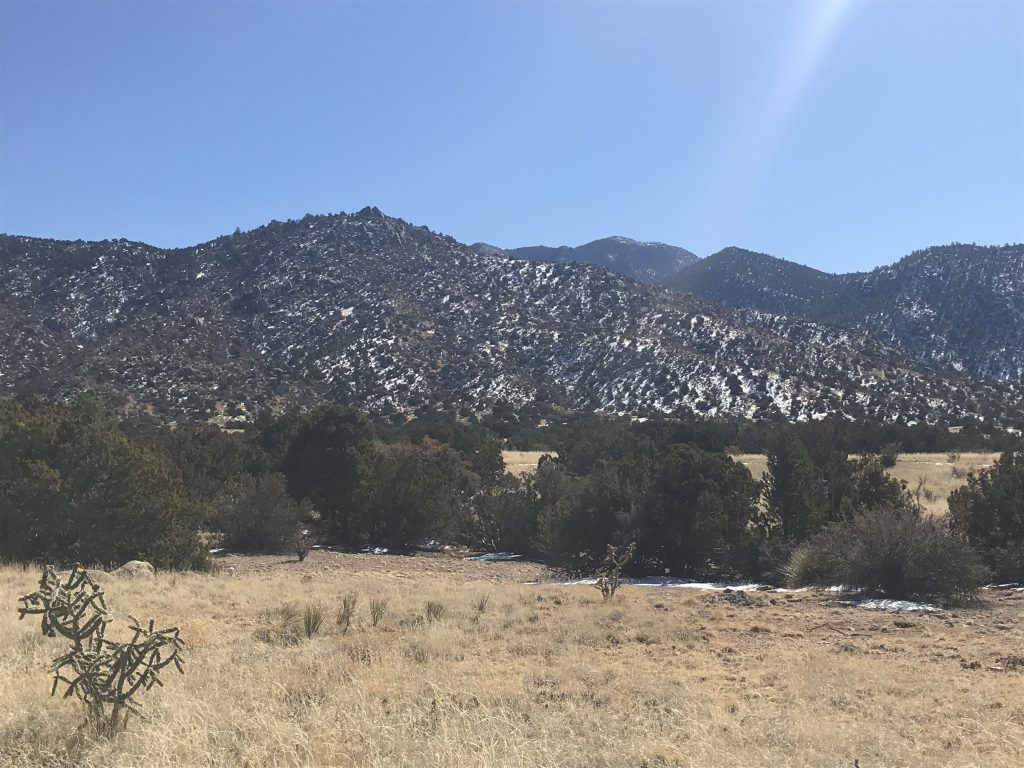It was late November, a couple of years ago, when I developed a lump in my breast. It showed up very suddenly over the course of several days. A large, hard knot of tissue on my left side. It was scary. I immediately set up a doctor’s appointment with a gynecologist.
Unfortunately, when she examined it, she wasn’t sure what it was either. She ordered more tests and imaging. I went in for a mammogram, ultrasound, and biopsy. It was December by this time. When I went in for my mammogram, there was a Christmas tree in the corner and cheery Christmas music playing over the speakers as I filled out a sheet with my family history of cancer. The contrast was strange to me–a willful show of cheeriness in a place where they often dealt with difficult things.
 Then we waited for news. The call came three days before Christmas–the lump in my breast was benign. However, the doctor was still concerned about the size and referred me to a breast specialist. I would have my first visit with her on New Year’s Eve.
Then we waited for news. The call came three days before Christmas–the lump in my breast was benign. However, the doctor was still concerned about the size and referred me to a breast specialist. I would have my first visit with her on New Year’s Eve.
Meanwhile, though I went into the holidays free from the fear of cancer, my breast continued to grow worse. It became red and inflamed and extremely tender and painful, draining from the area where they had done the biopsy.
Dr. Mitchell, the breast specialist, was a tall woman with flamboyant white hair that fluffed around her face and a brisk but pleasant bedside manner. She took one look at my breast and gave me a name for my condition: Idiopathic Granulomatous Mastitis, or IGM. A rare form of non-lactational mastitis that causes inflammation and hardening of the breast tissue. Several factors could trigger it, including breastfeeding, outside infection, or hormonal changes. This last seemed the most likely cause for mine. Though it had not yet been diagnosed, I was dealing with hypothyroidism, and I had recently started some medication for clinical depression.
While it was a relief to have a diagnosis, the bad news was that little research has been done and little is known about IGM or how to treat it. The latest research showed that the best treatment was steroid injections directly to the breast. This could calm the inflammation without adding the slew of side effects often accompanying steroids by mouth. However, there is no cure for IGM. It is a smoldering infection that will eventually burn itself out–Dr. Mitchell informed me–though this could take several years.
She gave me an injection that day, and then I came in every three weeks to receive another. It did immediately help to calm the inflammation, and as I continued going back for more injections, my breast continued to improve.
Winter passed, and many of the warm spring days found me making my way to the oncology department of Presbyterian Hospital. The nurses began to know my name. We would chat pleasantly as I sat in the waiting room, surrounded by patients who were generally older, many in a wheelchair, and most wore hats or had no hair.
It made me feel grateful, more than anything, that my infection was benign. And while it certainly wasn’t fun receiving the injections, I was grateful it was nothing worse.
The injections continued to work, until suddenly, they didn’t. One week, a few days after an injection, my breast flared up again. It was too soon for another injection. I called the doctor, and we talked about our options. The next step, the doctor told me, was probably to try a round of steroids by mouth. If this didn’t work, I would possibly have to go on a round of heavier immune-suppressing drugs, such as Methotrexate. I really wanted to avoid that, so I opted to try the steroids by mouth.
» RELATED READ: The Breastfeeding Infection That Hit Me Like a Truck + 6 Treatment Tips «
After the three-day round of steroids, the inflammation cleared up. The lump wasn’t completely gone, but the pain was. My breast looked normal again, and thankfully I seemed to have escaped any side effects.
I continued to return and have my breast examined over the next several months, but it wasn’t getting worse or better. It was stable for the time being. It wasn’t causing me pain or interfering with my life too much. Dr. Mitchell suggested for the present we wait on any further treatments and just do some watchful waiting. I agreed.
 And that is where things stand to this day. It has been several years now, and there is still a hard knot of tissue in my left breast. The infection hasn’t burned itself out yet. Sometimes it gets a little worse, then a little better. Sometimes it makes me a little itchy. But overall it doesn’t interfere with my life much. It’s just . . . there.
And that is where things stand to this day. It has been several years now, and there is still a hard knot of tissue in my left breast. The infection hasn’t burned itself out yet. Sometimes it gets a little worse, then a little better. Sometimes it makes me a little itchy. But overall it doesn’t interfere with my life much. It’s just . . . there.
Have you had any experience with IGM? I would love to hear about it. I hope to connect with others who have had this experience or be a resource for people who are feeling alone.
About Our Guest Blogger:
 Laura Holland lives in the Sandia Mountains east of Albuquerque, NM, with her husband, James, and two sons. After several losses, Laura and James were thrilled to welcome their first son, David, in August, 2014. They struggled to get pregnant again after that but joyously welcomed a miracle baby, Jonathan, born in August of 2022. Laura is a UNM alumna with a degree in English and History. Laura is a stay-at-home mom who homeschools and loves learning and working with her family on their small-scale homestead. Two Great Pyrenees, two cats, five sheep, twenty-five chickens, and a garden keeps things interesting!
Laura Holland lives in the Sandia Mountains east of Albuquerque, NM, with her husband, James, and two sons. After several losses, Laura and James were thrilled to welcome their first son, David, in August, 2014. They struggled to get pregnant again after that but joyously welcomed a miracle baby, Jonathan, born in August of 2022. Laura is a UNM alumna with a degree in English and History. Laura is a stay-at-home mom who homeschools and loves learning and working with her family on their small-scale homestead. Two Great Pyrenees, two cats, five sheep, twenty-five chickens, and a garden keeps things interesting!
The opinions expressed in this post are those of the author. They do not necessarily reflect the official policy or position of ABQ Mom, its executive team, other contributors to the site, its sponsors or partners, or any organizations the aforementioned might be affiliated with.












I have never heard of this. Thank you for sharing your experience. I’m thankful you have had some treatment and relief! 💝
Comments are closed.